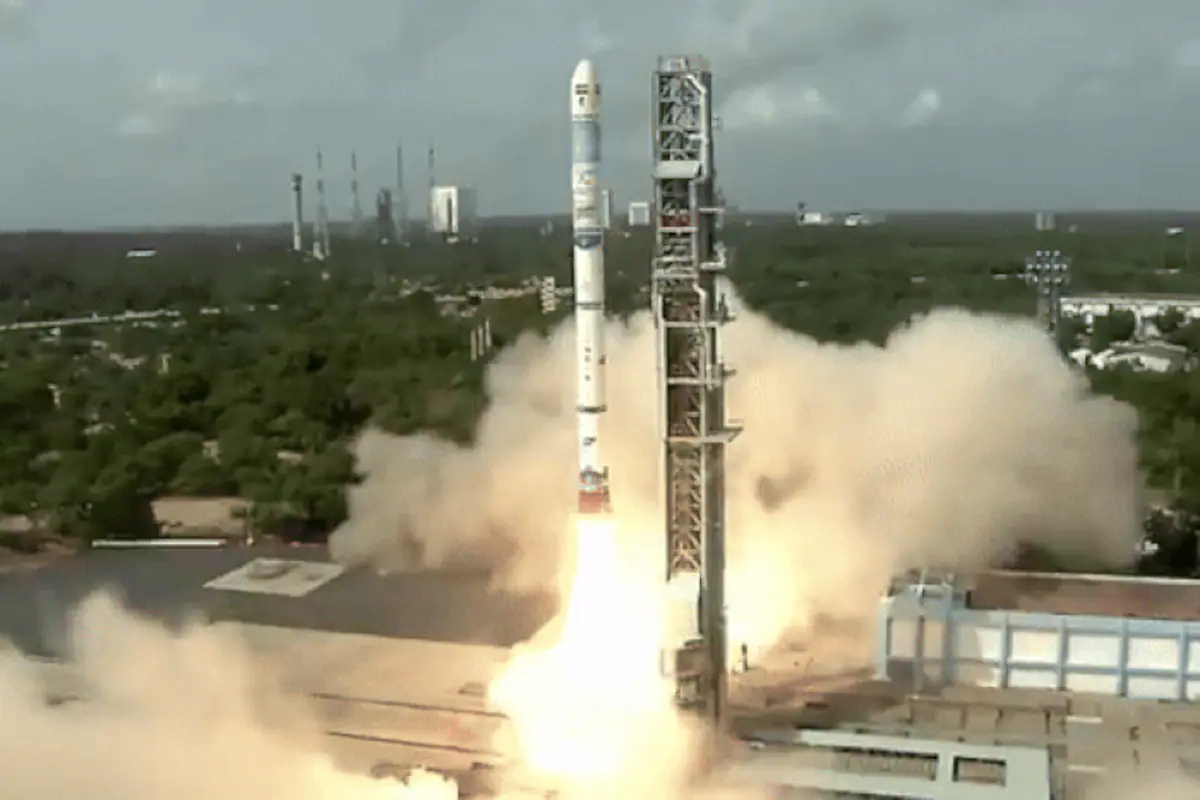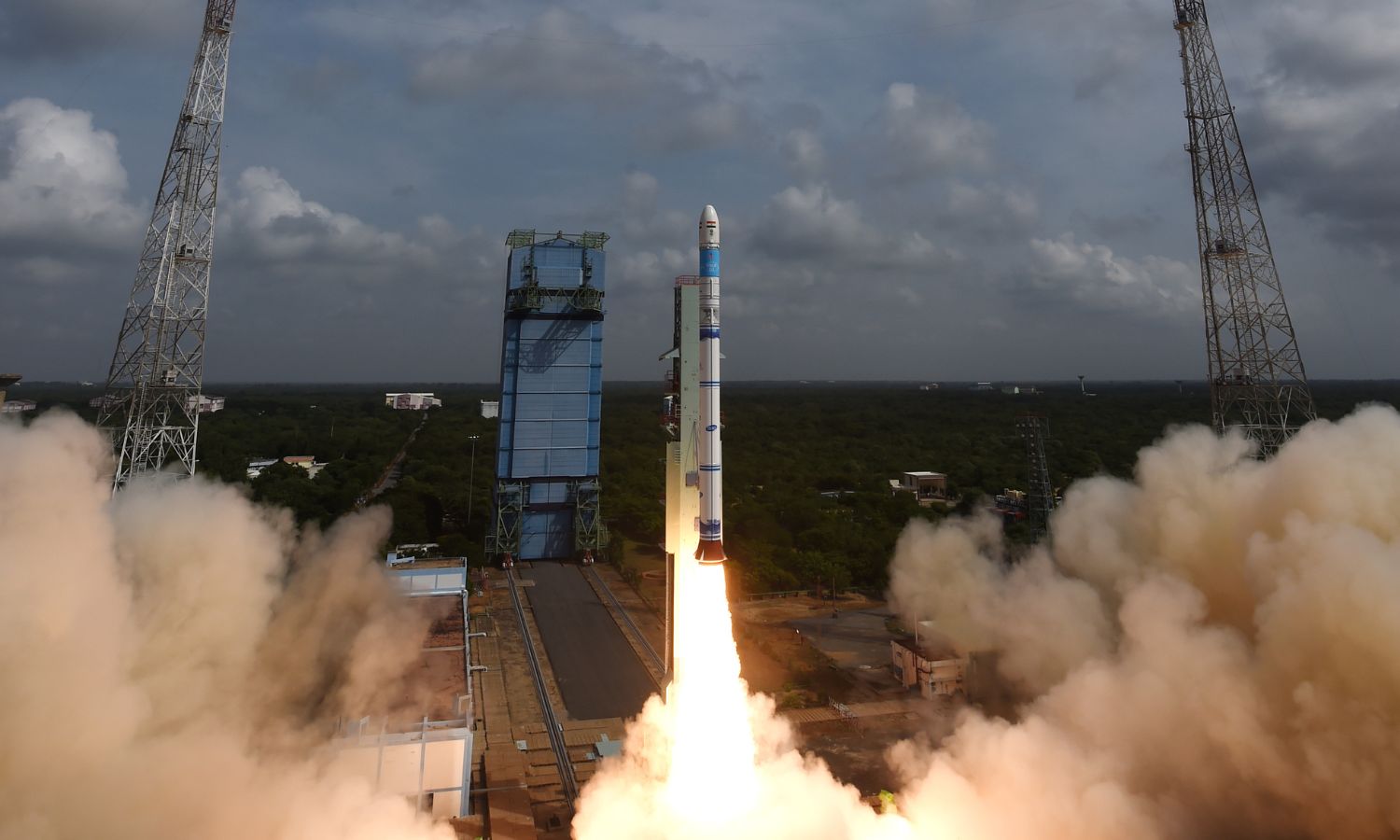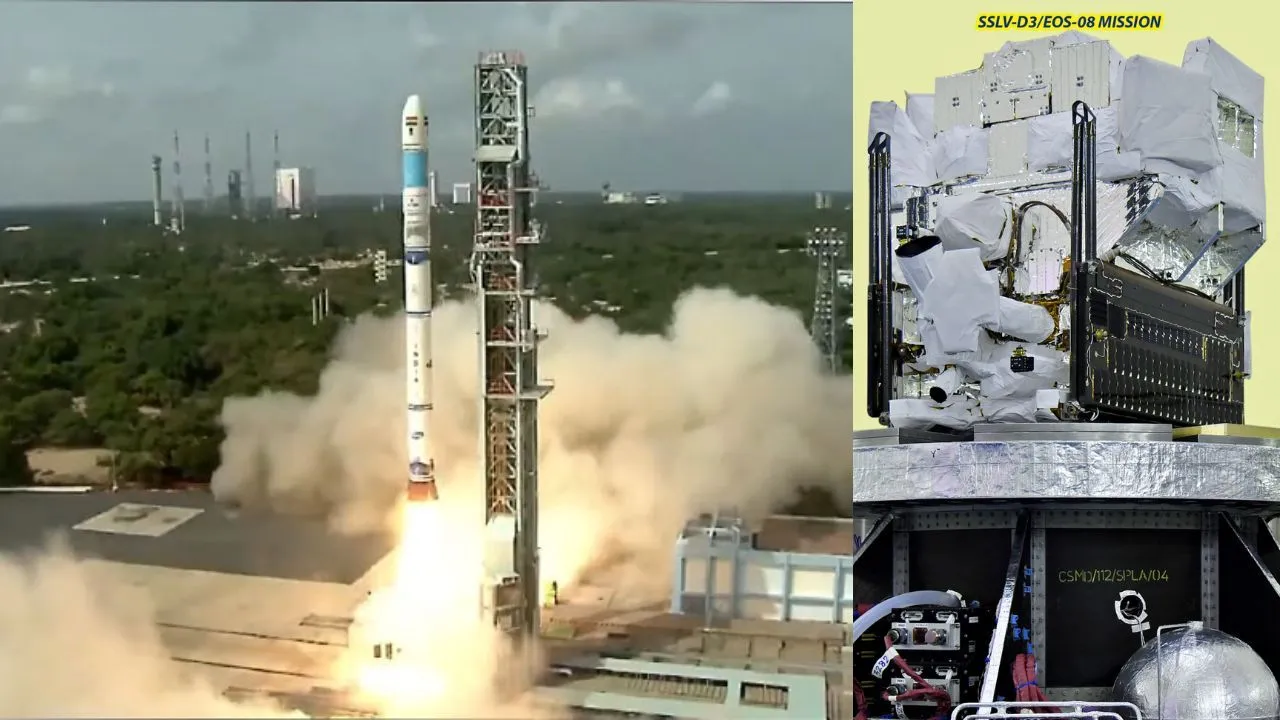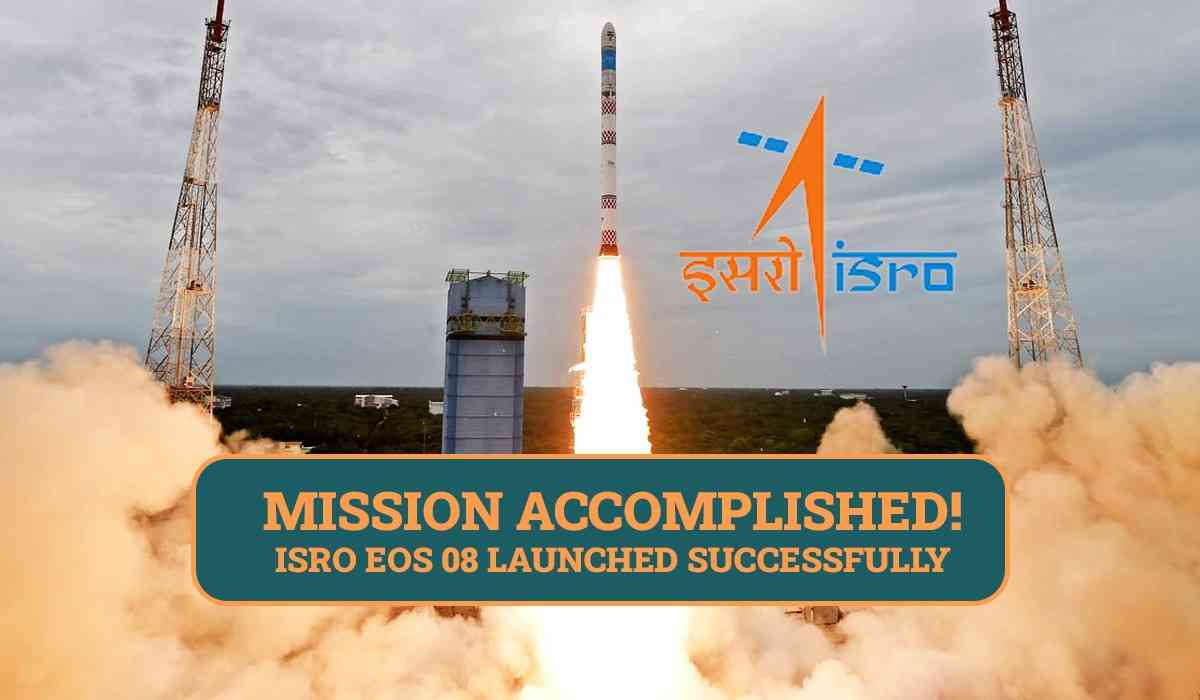On August 16, 2024, the Indian Space Research Organisation (ISRO) marked a significant milestone with the successful launch of the third developmental flight of its Small Satellite Launch Vehicle (SSLV). This launch, conducted from the Satish Dhawan Space Centre in Sriharikota, Andhra Pradesh, represents a pivotal moment in the evolution of India's space capabilities.

Overview of the SSLV-D3 Launch
- Successful Launch and Satellite Deployment
On the morning of August 16, ISRO achieved a remarkable feat by launching the SSLV-D3, its third developmental flight. The rocket successfully placed the EOS-08 satellite into orbit and deployed the DEMOSAT as planned. The SSLV-D3’s performance was lauded by ISRO’s chief, S. Somanath, who confirmed that the rocket placed the spacecraft into the exact orbit with no deviations from the planned trajectory.
- Confirmation of Mission Success
ISRO’s chief S. Somanath expressed satisfaction with the mission, noting that both the EOS-08 and SR-08 satellites were injected into their respective orbits after the necessary maneuvers. He commended the SSLV-D3 project team for their successful execution, adding that the final orbit would be confirmed through tracking, but preliminary indications suggested flawless performance.
- Government and Institutional Reactions
Union Minister of State for Science and Technology, Jitendra Singh, celebrated the success by sharing a video of the launch and praising ISRO for its continued excellence. He highlighted the role of Prime Minister Narendra Modi in supporting the space agency’s achievements.
Kudos team #ISRO for the successful launch of SSLV-D3/EOS-08 Mission. With the personal intervention & patronage provided by PM Sh @narendramodi, Team @isro has been able to carry one success after the other in a serial manner. pic.twitter.com/9AJ5cgcNhq— Dr Jitendra Singh (@DrJitendraSingh) August 16, 2024
Technical Details of the SSLV-D3
- Specifications of the SSLV
The SSLV-D3 rocket, which stands at approximately 34 meters in height, is the smallest among ISRO’s launch vehicles. It is designed to deliver satellites into Low Earth Orbit (LEO) with a payload capacity of up to 500 kg. The EOS-08 satellite, which weighs 175.5 kg, was launched aboard this vehicle.
- Purpose and Capabilities of the EOS-08 Satellite
The EOS-08 satellite is intended for a variety of applications, including soil moisture assessment and disaster management. Its successful launch marks a significant step in the development of SSLV as a reliable small-lift launch vehicle.

Significance of the SSLV-D3 Mission
- Completion of Developmental Flights
The launch of SSLV-D3 is particularly noteworthy as it marks the completion of the SSLV’s developmental phase. The previous two flights had mixed results: the maiden flight in August 2022 did not achieve the intended orbits, but the second developmental flight on February 10, 2023, was successful. With SSLV-D3’s success, ISRO has now declared the SSLV development program complete.
- Implications for Future Missions
The successful conclusion of the SSLV development opens new avenues for future space missions. Indian industries can now leverage this rocket for commercial satellite launches, with support from NewSpace India Limited, a government-owned company. This development signifies ISRO's growing capabilities in the commercial space sector.

What ISRO's SSLV-D3 Launch Signifies for India's Space Future?
1. The Launch and Its Cargo
The Small Satellite Launch Vehicle (SSLV) recently carried an experimental earth-imaging satellite named EOS-8, along with the SR-0 Demo Sat, a satellite developed by a Chennai-based start-up called Space Rickshaw.
2. The Mini Rocket’s Capabilities
This mini rocket, weighing 120 tonnes, is designed to carry satellites weighing up to 500 kilograms into a low Earth orbit. To put this in perspective, India's largest rocket, the Geosynchronous Satellite Launch Vehicle (GSLV Mk 3), also known as Bahubali, weighs 640 tonnes.
3. Cost-Efficiency Aligned with ISRO's Mission
In keeping with ISRO's tradition of cost-effective space missions, the SSLV was developed at a total cost of over ₹170 crore, taking over seven years to complete.
4. Launch Cost Estimates
Although ISRO has not disclosed the exact cost of the launch, analysts estimate that each SSLV launch will cost between ₹30-35 crore, making it one of the most economical launch vehicles in its category.
5. Technological Innovation on Board
A distinctive feature of the EOS-8 satellite is its capability to measure UV light exposure on surfaces. This technology is significant, as it will be utilized in India's first manned space mission, Gaganyaan, to monitor the astronauts' exposure to cancer-causing UV rays.
6. Industry Impact and Praise
ISRO Chairman Dr. S. Somanath has commended the SSLV for its "simplicity and production friendliness." He emphasized that this rocket is a game changer for the industry, potentially paving the way for future commercial launchers in India.
7. Design and Production Advantages
Dr. Somanath also highlighted the SSLV's design, which allows for large-scale production, flexible integration, and minimal testing before launch. Remarkably, the entire rocket can be tested and stored until needed.
8. Privatization and Industry Interest
In a move to privatize India's space program, the government opened up opportunities for the development of the small satellite launch rocket last year, which garnered initial interest from 20 companies.
9. Global Market Potential
According to a Bloomberg report, the global small satellite industry was valued at $3.25 billion in 2020 and is expected to grow to $13.71 billion by 2030. This highlights the substantial commercial potential of the SSLV.
SSLV-D3/EOS-08 Mission
Tracking images 📸 pic.twitter.com/1TSVx19ZDk— ISRO (@isro) August 16, 2024
Looking Ahead: The Future of SSLV
- Advancements and Commercial Use
With the SSLV development phase complete, ISRO is poised to transition from developmental testing to commercial operations. The SSLV’s smaller size and capability to carry payloads of up to 500 kg make it a versatile option for various satellite missions. The focus will now shift to manufacturing and deploying these rockets for commercial purposes, broadening India’s presence in the global space launch market.
- Recent Achievements and Future Prospects
The SSLV-D3 launch adds to ISRO’s string of successes in 2024, following the PSLV-C58/XpoSat mission in January and the GSLV-F14/INSAT-3DS mission in February. The SSLV’s successful launch reinforces ISRO’s track record of consecutive mission successes and sets the stage for a promising future in satellite deployment.
The SSLV-D3 launch represents a significant leap for ISRO, showcasing its evolving capabilities and reinforcing its position as a key player in the global space industry. As the agency moves forward, the successful completion of the SSLV development program will likely lead to more opportunities for commercial launches and international collaboration.
With inputs from agencies
Image Source: Multiple agencies
© Copyright 2024. All Rights Reserved Powered by Vygr Media.
























